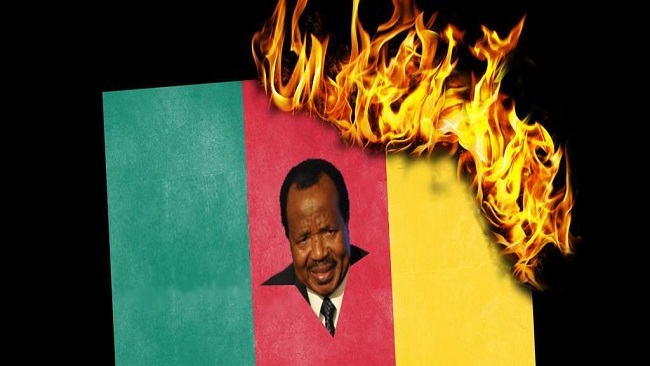The Ambazonia-French Cameroun crisis: April 2019 update
Relations between the largely Anglophone regions of Cameroon and the country’s dominant Francophone elite have long been fraught. Over the past three years, tensions have escalated seriously and since October 2017 violent conflict has erupted between armed separatist groups and the security forces, with both sides being accused of committing human rights abuses.
The tensions originate in a complex and contested decolonisation process in the late-1950s and early-1960s, in which Britain, as one of the colonial powers, was heavily involved. Federal arrangements were scrapped in 1972 by a Francophone-dominated central government.
Many English-speaking Cameroonians have long complained that they are politically, economically and linguistically marginalised. Some have called for full independence for the Anglophone regions.
The trigger for the current crisis was the appointment of French-educated judges to courts in the English-speaking regions. Local lawyers demanded their removal and the restoration of a federal system of government.
By the end of 2016, local teachers and lawyers had launched a campaign of strikes and demonstrations. University students and other activists began to get involved too. The security forces responded heavy-handedly. The Internet and all educational institutions were closed down.
Tensions remained high during the first half of 2017. Then, on 1 October 2017, the anniversary of Anglophone Cameroon’s independence from the UK, Anglophone separatists unilaterally declared independence. Mass demonstrations were met with force. Amnesty International estimated that at least 17 people were killed in the clashes.
Since then, numerous armed separatist groups have emerged and begun a violent campaign for independence. The security forces have responded in kind. Both sides stand accused of committing serious human rights abuses. Ordinary civilians are often caught in the middle – at least 500 have reportedly died. More than 400,000 people have been displaced, with over 30,000 crossing into Nigeria. There have also been reports of clashes between rival armed separatist groups.
Seriously flawed presidential elections took place in Cameroon in October 2018. 85 year-old president Paul Biya, who has been in office since 1982, sought re-election and won again. The runner-up, Maurice Kamto, leader of the Cameroon Renaissance Movement (MRC), who had expressed sympathy for some Anglophone grievances, disputed the result and claimed victory. He called for peaceful protests.
Despite a heavy security clampdown, there was a mass boycott of the vote in the Anglophone regions. This was the main reason why Joshua Osih, the candidate of the party which traditionally has garnered most support in the Anglophone regions, the Social Democratic Front, finished fourth.
There has so far been no improvement in the situation during 2019. If anything, levels of violence have increased. In a report issued on 28 March, Human Rights Watch said that since October “at least 170 civilians have been killed in over 220 incidents in the North-West and South-West regions.”
Protests called by the MRC took place in several cities in January 2019. Then on 28 January, Kamto and other leaders of the MRC were arrested , leading to more protests. In mid-February he and 130 of his supporters were charged by a military court with rebellion, insurrection and “hostility to the Fatherland”. In April, the authorities banned some planned MRC demonstrations.
So, what are the prospects? The outlook looks bleak. Although international engagement on the Anglophone Cameroon crisis has gradually increased, there are no signs currently that this will produce a change of stance on the part of either the Cameroon government or the armed separatists. Mediation efforts by the Catholic Church have so far led nowhere.
It is impossible to say how many people in the two Anglophone regions support secession. Some might still be satisfied by a return to meaningful federalism. But there is no indication that the central government is willing to consider restoring anything approaching federalism. Cosmetic measures remain the order of the day.
Official intransigence appears to be strengthening the hands of the secessionists. There are serious tensions between some of the different armed separatist groups involved on the ground, which further complicates the prospects for a peaceful settlement further down the line.
Source: Researchbriefings





